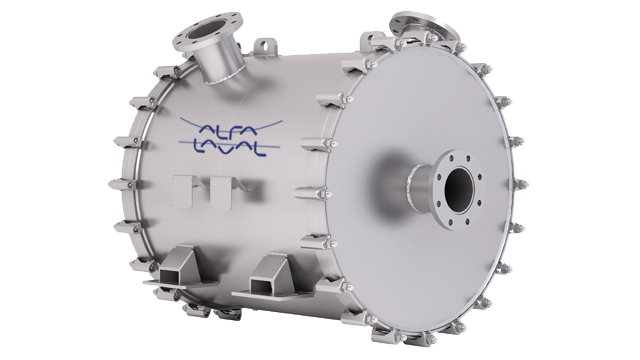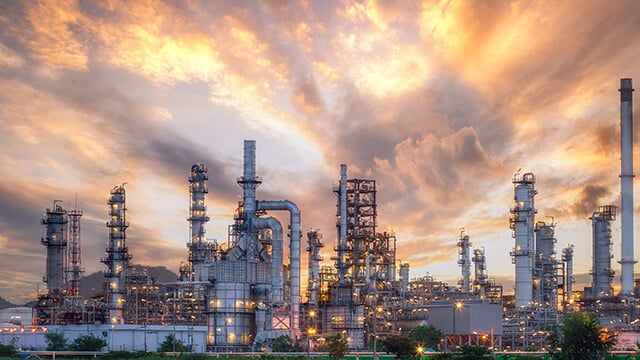Van afval naar grondstof: hoe een Aziatische rubberfabriek warm en koud water gratis wist terug te winnen
In de competitieve wereld van de petrochemische productie is het verlagen van operationele kosten cruciaal om winstgevend te blijven. Een middelgrote producent van styreen-butadieenrubber in Azië ging deze uitdaging aan door innovatieve warmteterugwinning toe te passen. Met twee Alfa Laval spiraalwarmtewisselaars en één Compabloc wist de fabriek restwarmte uit een stripkolom te hergebruiken, wat leidde tot aanzienlijke jaarlijkse energiebesparingen.
DATUM 2025-10-08 AUTEURDe uitdaging
Petrochemische fabrieken, met name die betrokken zijn bij de productie van styreen-butadieenrubber, verbruiken enorme hoeveelheden energie. Destillatie- en stripkolommen behoren tot de meest energie-intensieve eenheden en behandelen vaak warmte in bovengassen of dampen als afval. De uitdaging voor de Aziatische rubberproducent was om een manier te vinden om deze restwarmte terug te winnen en binnen de fabriek opnieuw te gebruiken, om zo de energiekosten te verlagen en de efficiëntie te verbeteren.
Onze oplossing
Alfa Laval bood de perfecte oplossing met hun compacte warmtewisselaars, die bekendstaan om hun hoge thermische efficiëntie en het vermogen om met kruisende temperaturen in één enkele eenheid te werken. De fabriek installeerde twee spiraalwarmtewisselaars en één Compabloc om warmte terug te winnen uit het bovengas van het stripproces, dat een temperatuur heeft van ongeveer 100°C (212°F). Deze teruggewonnen warmte werd vervolgens in twee fasen benut: een warmwatercircuit en een absorptiekoelinstallatie.
Procesimplementatie
Het implementatieproces bestond uit twee belangrijke fasen:
- Warmwatercircuit: In de eerste fase van warmteterugwinning werd het hete gas gebruikt om het retourwater van het circuit te verwarmen van 75°C (167°F) tot 85°C (185°F) via een Alfa Laval Compabloc. Voorheen werd dit water verwarmd met stoom die werd teruggebracht van 10 naar 2 bar. Door gebruik te maken van teruggewonnen warmte bespaarde de fabriek stoom ter waarde van ongeveer €500.000 per jaar.
- Productie van koelwater: In de tweede fase stroomde het gas door twee parallel geplaatste Alfa Laval spiraalwarmtewisselaars. De teruggewonnen warmte werd gebruikt om koelwater te produceren in een absorptiekoelinstallatie, ter vervanging van het traditionele ammoniaksysteem. Deze aanpassing, voltooid in 2008, verminderde het elektriciteitsverbruik van de fabriek met 50 kWh per geproduceerde ton butadieenrubber, wat resulteerde in een jaarlijkse besparing van €160.000 op elektriciteit.
De warmte die wordt teruggewonnen uit een stripkolom wordt gebruikt voor de productie van koelwater in een absorptiekoelinstallatie en voor het verwarmen van water in een warmwatercircuit dat verschillende warmtewisselaars in de fabriek bedient. De aanpassing resulteerde in een totale jaarlijkse energiebesparing van ongeveer 660.000 euro.
Impact en voordelen
De installatie van de warmtewisselaars van Alfa Laval bracht aanzienlijke voordelen voor de styreen-butadieenrubberfabriek:
- Energiebesparing: De fabriek realiseerde een totale jaarlijkse energiebesparing van ongeveer €660.000.
- Efficiëntie: De hoge thermische efficiëntie van de compacte warmtewisselaars maakte maximale warmteterugwinning mogelijk met minimale benodigde vloeroppervlakte.
- Kostenreductie: De fabriek verminderde aanzienlijk haar stoom- en elektriciteitsverbruik, wat leidde tot lagere operationele kosten.
- Duurzaamheid: Door restwarmte terug te winnen en opnieuw te gebruiken, verbeterde de fabriek haar algehele energie-efficiëntie en duurzaamheid.
De innovatieve warmteterugwinningstechnologieën van Alfa Laval hebben zich bewezen als een keerpunt voor de styreen-butadieenrubberproducent, door winstgevendheid en duurzaamheid te versterken in een veeleisende bedrijfsomgeving.
Downloads
De compacte, volledig gelaste Compabloc-warmtewisselaar is ontworpen om te werken met een breed scala aan agressieve media en bij hoge temperaturen en drukken.
Belangrijkste gegevens
Ontwerptemperatuur
400°C (752°F), tot -100°C (-148°F)
Ontwerpdruk
Van volledig vacuüm tot 42 barg (600 psig)
Maximaal warmteoverdrachtsoppervlak
840 m2 (8.985 ft2)
Constructiemateriaal
316L, SMO254, 904L (UB6), Titanium, C-276/C-22/C-2000



